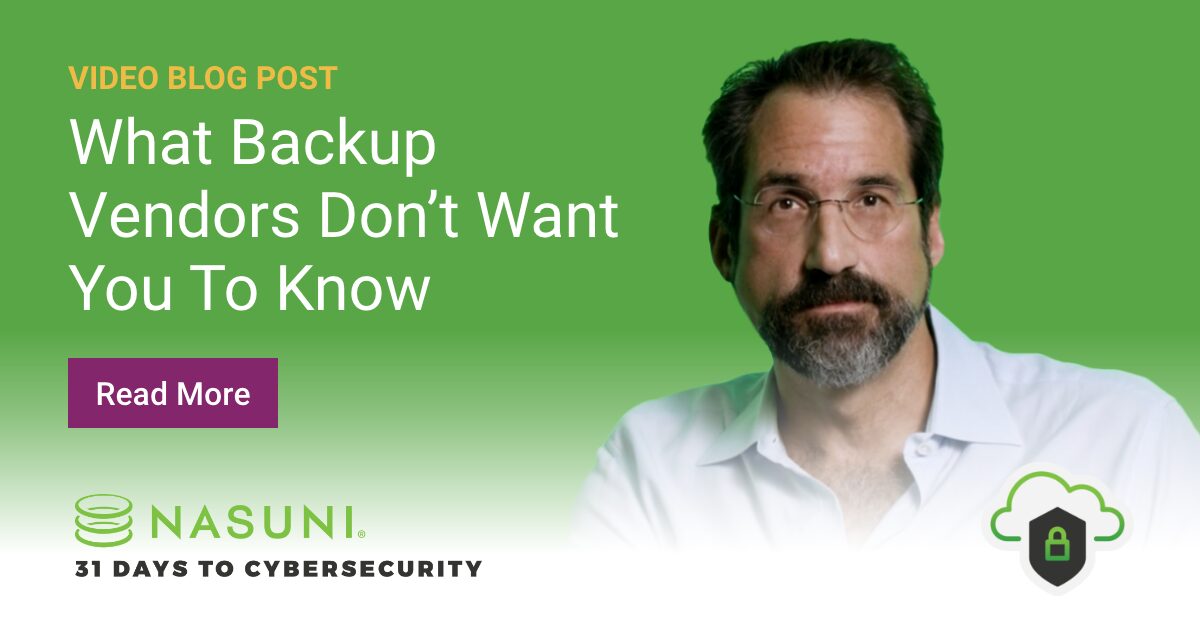What Backup Vendors Don’t Want You to Know
October 28, 2021

I began my career in operations, experiencing firsthand the difficulty of protecting large file servers using traditional backup solutions. I lived that pain, and founded Nasuni in part to cure it by creating a file system that automatically protects itself. Then I spent years talking to customers about this new approach to file systems, UniFS®, and why it’s beneficial. As I was out there listening in the field, however, I was constantly reminded that customers are far more concerned with what your technology can do for them and their business than its originality or intrinsic design.
The problem of ransomware has made this even more apparent.
Thanks to our cloud-native file system, which relies on an unlimited number of immutable versions, Nasuni allows enterprises to recover millions of files in minutes following a ransomware attack. Roughly 30% of our clients have been attacked by ransomware, and none of them have had to pay the ransom.
Backup, on the other hand, is broken. I’m not pointing a finger at any one technology or solution. I’m addressing the entire model of backup. Whether you’re copying back from tapes, a data center, or the cloud, the backup restore time following a distributed ransomware attack is absolutely crushing. We have many clients that have come to Nasuni specifically because they were unable to recover from large ransomware attacks – and they were relying on the latest, modern cloud backup, and following best practices established by today’s backup vendors.
In the short video below, I explain how backup fails to help enterprises recover fast enough from ransomware attacks, and why Nasuni is able to deliver such rapid recoveries.

The backup vendors don’t want you thinking about recoverability. But if you hope to survive in the age of ransomware, fast recoveries are absolutely paramount. I’ve already written extensively about backup’s inability to stand up to ransomware attacks and why companies need to recover using precision, scalpel-like technology solutions, not blunt force hatchets. I encourage you to watch the video, and follow my work on this blog for more on the subject.